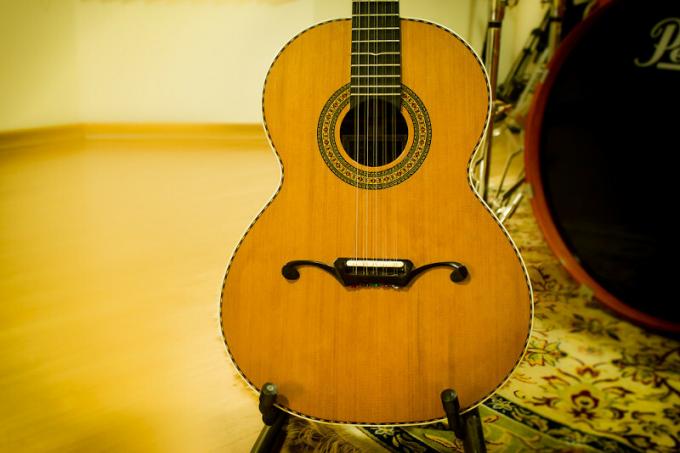THE culture is present in societies human beings since the beginning of time. It unites people from the same place around something in common: the sense of belonging. We can consider as elements of culture the language, religiosity, popular festivals, arts, cuisine, the way of dressing, among other things. As the term culture has several different meanings, we can attribute to it several ways of thinking about human intellectual organization.
Read too: Regions of Brazil - the division of the country and its particularities
What is culture?
The word culture has many different meanings. We can simply reduce culture to art, attributing to culture the meaning of being any and all forms of artistic production. But it can also be used to designate the animal and vegetable cultivation. In this sense, we can speak, for example, of the culture of tomatoes or the culture of cattle. We also associate the term culture with intellectuality, calling a person who has a broad and classical literary, musical, linguistic and artistic repertoire a cultured person. However, culture is much more than that.

Culture is a complex set of human creations that shape the profile of different societies. One of the common characteristics of all human groupings is the creation of culture. We can define culture, in this sense, as the set of habits that a society establishes as common to all who live in it. composed of various elements, such as language, religiosity, popular beliefs, cuisine, clothing, way of life and forms of production artistic.
As an example, we can take the example of the cultures developed in several places in Brazil. At the South, for example, there is the cultural habit of drinking a hot drink made from the effusion of yerba mate, the so-called chimarrão. At the North East, a literature of twine and the sudden they make up the cultural, literary and musical repertoire of the peoples who live there.
In the Midwest, there is a religious festival that has become a tradition and is part of Goiás culture: the Cavalcades, that take place in the city of Pirenópolis and are a reenactment of the struggle between Christians and Moors during the Crusades. In the region North, you platestypical they are strongly influenced by indigenous cuisine and the use of freshwater fish and plants from the Amazon region.

Brazilian culture, as a whole, is strongly influenced by the culture of the three main ethnic groups that made up the formation of the Brazilian people: the indigenous culture, a african culture and European culture. We can say that culture is what expresses our identity and unites us as a people of the same origin.
See too: Inca civilization - people who still influence the culture of South American countries
culture and society
Culture is the most important trait for a society, because it is what unites people, causing the social cohesion necessary for a society to keep functioning. People group together in societies to make life easier. In this sense, culture has the task of making these people remain united through a feeling of equality and belonging to the same place.
Culture is what unites, for example, Brazilians, giving the feeling of what it is to be Brazilian. She has the ability to make people integrate around a common life project.
Culture for Sociology
THE Sociology it was a science that emerged in the 19th century with the purpose of studying society in a scientific and rigorous way. At the same time and together with Sociology, the Anthropology, which seeks to study the human being through their physical and cultural characteristics.

When Anthropology emerged, it intended to understand human culture from the perspective of comparison between various societies. In the nineteenth century, Europeans were expanding their territory to other continents and, with that, coming into contact with other cultures, such as the culture of the natives of Africa, Oceania and the Americas.
The first proposals of Anthropology were intended to study different cultures (which they considered, prejudicedly, as inferior) in order to understand how humanity would have evolved to reach what was understood as superior culture, that is, theirs same.
Today we know that there is no superior culture or an inferior culture, but different cultures that develop in different places.
Also access: Festa Junina - one of the most popular festivals in Brazilian culture
Types of culture
Sociology and the Philosophy classify the different cultures, in aesthetic and artistic molds grouped, in three areas. Two of them are authentic artistic and cultural ways of doing and one is just a technique of reproduction of the capitalist market to generate profits for a small number of people. These types of cultures are:
- Culturepopular:it is that culture made by the people in a spontaneous and intuitive way. It's not rationalized, it's just made and popularized. We can bring as an example popular festivals in Brazil, such as the Festival de Parintins, in the North. Rooted country music and samba are also examples of Brazilian popular culture.

- Culturescholar:it is the culture made by the elite for the elite. It is generally in the highest social realms and is cultivated by people that society considers to be more intellectual. It is a more elaborate and less intuitive type of culture, with elements of greater refinement of the senses and of taste, generally more subtle and strategically designed so that the work of art is more elaborated.
- Mass culture:this is actually a way capitalism has found to generate a lot of money through art. It is an inauthentic art form that is based on reproducing patterns that appeal to the general public, making people consume on a large scale, generating a large and profitable market. Usually, the quality of the cultural elements of the cultural industry it is inferior to the level of other types of culture. The formula adopted by this culture can mix elements of popular culture and high culture.

